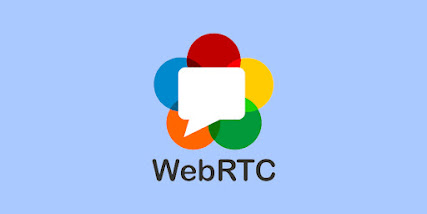Using WebRTC for Peer-to-Peer Video Applications
Using WebRTC for Peer-to-Peer Video Applications
Yeah. That’s how I met WebRTC.
Let me back up. It was mid-January 2025, and our small dev team at this scrappy startup had been juggling feature requests like circus performers. A client (bless their ambition) asked for a “simple” peer-to-peer video chat tool. “You don’t need Zoom,” they said. “Just a clean browser-based solution, low-latency, no servers for media.” Sounds easy, right? Right?
First Date With WebRTC: Expectations vs. Reality
When I first Googled WebRTC (Web Real-Time Communication, in case you’re new here), I got starry-eyed. Peer-to-peer video and audio, directly from browser to browser. No need for middlemen servers to stream the actual media. It felt like magic. Or rather, it read like magic.
In theory, all you need are two users, a handshake, and poof—real-time video. But in reality? You need signaling. You need ICE candidates. You need STUN and TURN servers. And patience. So. Much. Patience.
The Misunderstood Middleman: Signaling
Here’s the thing about WebRTC—despite it being “peer-to-peer,” the connection setup still requires a middleman. You need a way to send metadata (SDP offers, ICE candidates, etc.) from one peer to another.
Think of it like dating. WebRTC is like two people on either side of the world trying to talk—but someone needs to set up the call, say hello first, and hand over phone numbers. That’s what signaling is.
And here's the kicker: WebRTC doesn’t define how to do signaling. You’re left to figure that out yourself. You can use WebSockets, Socket.IO, Firebase, even smoke signals for all it cares. We went with WebSockets because... why not add another layer of complexity?
STUN & TURN: The Bouncers of Peer-to-Peer
Now here’s a part that really tripped me up early on—STUN and TURN servers. These aren’t just buzzwords; they’re lifelines. A STUN server helps your device discover its public IP (crucial when you’re behind NATs or firewalls). TURN? That’s your backup. If direct peer-to-peer fails, TURN relays media through a server.
We didn’t think we needed TURN at first. “Most users won’t be behind firewalls,” I said. Famous last words. The first test with a colleague in another city? Black screen. Silence. Nada. Guess what solved it? A good old TURN server.
We ended up using a hosted TURN service after spending way too many hours trying to self-host one. Trust me—unless you like punishment or really love fiddling with ports and firewalls, outsource your TURN needs. Save your sanity.
First Success: A Shaky Hello
I still remember the first successful connection. I was at my desk, my co-worker on his laptop across the room. We clicked our respective “Connect” buttons and... a face popped up. Mine on his screen, his on mine.
It wasn’t perfect. The video lagged, there was an awkward freeze, and our audio overlapped like a badly dubbed movie. But we screamed like kids who just launched their first potato rocket.
Debugging = Therapy
Here’s the thing no one tells you about building with WebRTC—it will test your emotional bandwidth. Debugging WebRTC is like untangling a dozen headphone wires in the dark while someone yells ICE candidates in your ear.
Browser inconsistencies were a nightmare. What worked in Chrome refused to cooperate in Safari. Firefox? Don’t even get me started. I found myself reading GitHub issues at 2 a.m. like bedtime stories. “Oh, that’s a known Safari bug from 2023. Cool cool cool.”
Security Without the Stress? Nope.
I’d love to tell you WebRTC is secure out of the box. And technically, yes—it encrypts media end-to-end using DTLS and SRTP. But that’s just one part of the story.
The real challenge is handling your signaling securely. Since WebRTC doesn’t care how you do it, it also doesn’t protect you from yourself. I had to dive into securing WebSocket connections, sanitizing messages, and making sure no random stranger could hijack a video stream.
Oh, and GDPR? Yeah, storing logs or even offering “record this call” opens a whole new legal can of worms.
What I’d Tell My Past Self
- Don’t expect it to work on the first try. Or the fifth.
- STUN is not enough—budget for TURN.
- Build logging into every step. ICE gathering, signaling, connection states—all of it.
- Don’t skip the UI/UX. Even if the backend works, users get confused if “Connect” doesn’t feel instant.
- Test across browsers early.
- And lastly... celebrate the little wins.
Why It’s Still Worth It
After all the headbanging and browser tantrums, I can still say this: WebRTC is incredibly powerful. The fact that two browsers can talk to each other directly—streaming audio, video, even files—without a media server in between? That’s wild.
In 2025, peer-to-peer tools are more in demand than ever. From virtual classrooms to remote support apps, users expect real-time. And while big players like Zoom or Teams exist, there's a space—no, a need—for lightweight, private, no-install alternatives.
If you’ve got a team, or even if you’re flying solo, it’s absolutely possible to build something meaningful with WebRTC. It won’t be easy, and it sure as heck won’t be perfect. But it’ll be yours.
And when that first user waves hello through your app? It’s totally worth it.



Comments
Post a Comment